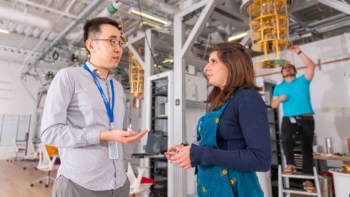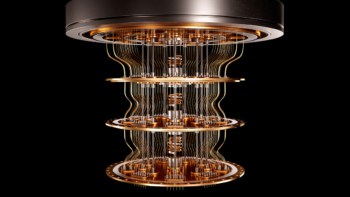
Two different quantum computers, one using light and the other superconducting circuits, have done calculations well beyond the capability of conventional computers – according to physicists in China. The breakthroughs provide further encouragement that quantum computers could soon be solving practical problems that are impossible to implement on conventional, or “classical”, computers.
The quantum computers were built by two groups at the Hefei National Laboratory for Physical Sciences of the University of Science and Technology of China. Both groups are led by Jian-Wei Pan.
Both systems were used to calculate the output probabilities of quantum circuits. These are systems that accept multiple quantum states as inputs; have those states travel through a quantum circuit; and then deliver multiple states as output. An example is system whereby single photons are input in parallel to an optical circuit where they can interfere with each other via components such as beam splitters and then emerge from multiple output ports.
Exceedingly difficult
The computational goal is to work out the probability that a certain input configuration would lead to a certain output configuration. It turns out that this task is exceedingly difficult for a classical computer if the quantum circuits have more than a few tens of inputs and outputs.
A quantum computer, however, can use quantum sampling techniques to calculate random instances of the probability distribution in much less time that a classical computer. As a result, sampling experiments are a way to demonstrate “quantum advantage”, the idea that quantum computers are much better than their classical counterparts at solving certain problems.
Huge speedup
In a paper in Physical Review Letters, Pan and colleagues explain how they used a technique called Gaussian boson sampling to analyse the output of a 144-mode optical interferometer. The team says that their system has 1043 possible outcomes and that their implementation can sample the output 1024 times faster than a classical supercomputer. This quantum speedup is a huge increase over the team’s previous result of 1014 times, which they reported in December 2020. The result makes it extremely unlikely that a specialized classical algorithm can be devised to match this performance, thereby establishing quantum advantage.
In a second paper in Physical Review Letters, another team led by Pan used a quantum computer that comprised 66 transmon superconducting qubits that are connected via 100 tuneable couplers. Their sampling experiment involved using 56 of the qubits, and the system was put through 20 quantum logic cycles.

Quantum advantage demonstrated using Gaussian boson sampling
Although their computer is just three qubits larger than the 53 qubit system used in 2019 by researchers at Google to demonstrate quantum advantage, Pan and colleagues estimate that their sampling calculation is as much as 1000 times more difficult to do on a classical computer. As a result, they claim that a calculation that takes about an hour on their system would take eight years to complete on a classical computer.



